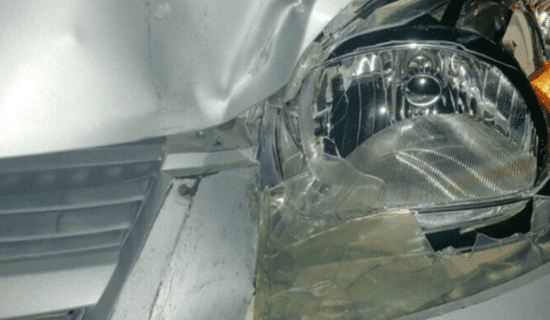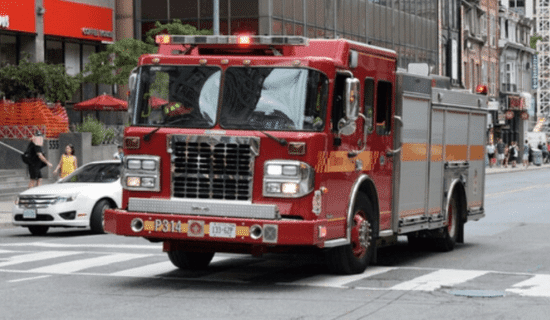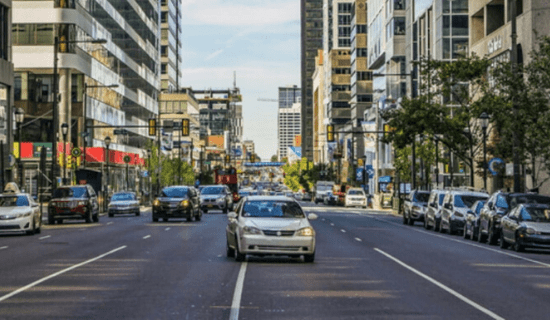Who Is At Fault In A Car Accident
It can be difficult to determine who is at fault in a car accident, but determining fault is important. Even minor fender-benders can wind up being costly due to vehicle damage and any injuries that may have resulted from the crash. In the case of more serious car accidents, especially those resulting in severe injuries or even fatalities, the costs can rise astronomically. Thus, for the individuals involved in the crash, as well as for insurance companies, attorneys and courtroom juries, it is extremely important to have all the facts and know the applicable laws to determine liability.
When multiple parties are involved in a crash and the circumstances of the collision are unclear, however, there may not be an obvious answer to the question of who is at fault. Which driver made a mistake? Was one driver negligent, or were both at fault? Was either driver speeding or otherwise breaking local traffic laws?
These are important questions to answer thoroughly, even if it seems obvious at first glance who was responsible. Insurance companies require evidence to determine who is liable for the damages, injuries or deaths sustained in a car accident. Evidence must also be presented to members of the jury or a judge when a car accident case goes to court.
One of the best types of evidence in establishing car accident liability is an official police report regarding the accident. When a police officer visits the scene of an accident, he or she must file a crash report, and that report will contain information that will be important in determining liability. If one or both drivers were speeding at the time of the crash, for example, that is an important detail the officer will include in the report. The officer will also include any related evidence, such as length of tire skid marks on the road, paint found on one vehicle’s dents that matches the color of the other vehicle, statements from witnesses who saw the accident occur and so on.
 Car Accident: Determining Fault by Location of Damage
Car Accident: Determining Fault by Location of Damage
One common method of establishing liability after a car accident is determining fault by location of damage. Inspecting where the damage occurred on the vehicle can shed light on the collision, including the events that led up to it and who was the responsible party.
Police officers and insurance adjusters who assess damages after a car accident often use principles of physics to piece together clues provided by how, where and how extensively the vehicles involved in the accident were damaged. These individuals can look at dents and scratches on a vehicle, compare them with any injuries sustained by drivers or passengers involved in the crash and essentially trace the clues backward in time to construct a theory regarding how the crash occurred. They can also use these same clues to rule out implausible crash scenarios—ways the collision cannot have occurred.
For example, when a collision occurs between two cars traveling toward each other on two sides of the same roadway, and the crash leaves one car with a damaged front end and the other with a damaged passenger-side door, the clues suggest that the driver of the car with the dented door was attempting to make a left turn in front of oncoming traffic.
Another example of determining fault by location of damage is a collision at a stop sign that leaves one vehicle with a dented front end and the other with a damaged rear bumper. In this case, it can be surmised that the first car probably crashed into the second from behind.
 Car Accident: Hit-From-Behind Settlement
Car Accident: Hit-From-Behind Settlement
Having another vehicle hit you from behind, a crash caused by someone making a left turn and an accident which happens when the driver is changing lanes are among the most common types of auto and truck accident causes. In the case of rear-end collisions, the driver whose vehicle crashes into the back of the vehicle in front of them is almost always at fault. In most cases, evidence for liability in a rear-end collision is both clear and simple: One vehicle has a dented rear bumper that corresponds with the other vehicle’s dented front end. If the impact occurred at a stop sign or a red stop light, or if the driver of the rear-ended vehicle suffers from whiplash because of the crash, these are even more compelling bits of evidence in establishing liability and the need for compensation for the injured driver. All of these factors can be used to determine what type of settlement is appropriate.
There are rare cases in which the driver of the vehicle that was struck from behind is at least partially at fault. If the rear-ended car contributed in some significant way to the likelihood of an accident happening, it may be determined that the driver shared a portion of the liability for the crash. In this case, that driver would not be entitled to as much monetary compensation, even if they were seriously injured.
An example of this would be the rear-ended vehicle having non-functioning tail lights, particularly if the crash occurred at night. Another possibility would be if the driver of the rear-ended vehicle stopped, due to a breakdown or flat tire, in the middle of a high-speed roadway or in a low-visibility area (for example, just past the bend of a curve), and then failed to move the car out of the roadway to safety.
Car Accident Fault: Left Turn
Collisions that occur when a left-turning vehicle is struck by an oncoming vehicle going straight are another common type of car accident. As with rear-end collisions, there is one driver who will almost always be found to be at fault; in this case, the at-fault driver is almost always the driver who was turning left. That individual has the burden to use his or her turn signal, observe the roadway—including any pedestrians and all other approaching vehicles—and wait for a proper break in traffic before completing the turn safely.
There are two instances in which the oncoming vehicle that was going straight could be found to be at fault for the collision, whether in addition to or instead of the driver of the left-turning vehicle. If the driver of the car that was going straight ran a red light or was going significantly over the speed limit, that person is more likely to be found at least partially liable for the collision.
 Who is At Fault in a Car Accident: Changing Lanes
Who is At Fault in a Car Accident: Changing Lanes
State traffic laws are integral to determining who is at fault in a car accident. Traffic laws vary from state to state regarding many aspects of driving, including legal lane changes. In Texas, for example, drivers are required to signal when they are changing lanes. If a driver causes an accident due to changing lanes unsafely, illegally or without signaling, he or she is likely at least to share responsibility for the accident, if not bear sole liability.
Car Accident: Car Owner-Related Liability and Self-Driving Cars
If you lend your car to a friend or family member and that person is involved in a crash, whether you will be held liable for damages and compensation depends on the specific situation, along with the particulars of your insurance coverage. Generally speaking, if you have given someone else permission to use your car, that individual is covered by your insurance policy in the event of a collision, unless your policy specifically excludes him or her based on age, driving record or other factors.
If someone, whether a friend, family member or stranger, takes your car without your permission and winds up in an accident, it can be hard to prove beyond any doubt that you didn’t give them permission. In that case, you may end up being at least partially liable for damages. You are also likely to be held liable for an accident if you loaned your car to someone who was unlicensed or who was under the influence of drugs or alcohol at the time of the crash.
Self-driving cars are increasingly common on the road, and they present unique considerations and concerns regarding accident liability. If a driverless car is involved in a collision that results in vehicular damage, passenger injuries or both, who is to be held responsible for damages and compensation when there was no human driver? What happens when a case goes to trial when it comes to these new technologies? Only time will tell.
Since most self-driving vehicles currently on the road are still partly under the control of human drivers, the majority of crashes involving these vehicles are caused by human error. Thus, at this point in time, liability still falls on the people involved in the accident. In the future, however, as automation technology increases and humans become less and less involved in operating self-driving vehicles, the manufacturers of these vehicles are likely to be held accountable more often for damages and compensation in the event of a crash.
Slack Davis Sanger Can Help You Secure Compensation
If you have been involved in a car accident, or if someone else has an accident while driving your car, your best course of action is to contact a knowledgeable attorney who can advise you regarding your specific situation. In any car accident liability case, the burden of proof is on the drivers to provide evidence regarding liability issues for the insurance companies or the judge and jury if the case goes to trial.
If you or someone you love has been injured in a car accident, or if you lost a family member due to a fatal car accident in which the other driver was at fault, contact Slack Davis Sanger. Our attorneys are leaders in personal injury law, and we are experienced, caring and committed advocates for our clients. We are skilled in determining liability in car accident case and pursuing the full and fair compensation you deserve.

The firm handles cases involving catastrophic personal injuries and deaths. Our work spans three decades of handling airplane and helicopter crashes, truck and car accidents, oilfield and construction accidents, and other devastating accidents. We try lawsuits throughout the country in both federal and state courts and have recovered hundreds of millions of dollars for our clients. To date, we have handled or tried cases in 47 states, read more about our attorneys and firm.

